Knitting the Exploration Station shawl designed by Stephen West has been on my to do list for several years. In June I finally chose 4 of my own hand dyed 4ply yarns and cast on. I chose a light coloured yarn, 2 mid toned colours and a dark colour, 2 were from my Hand Dyed BFL and 2 were from my Hand Dyed Merino ranges.
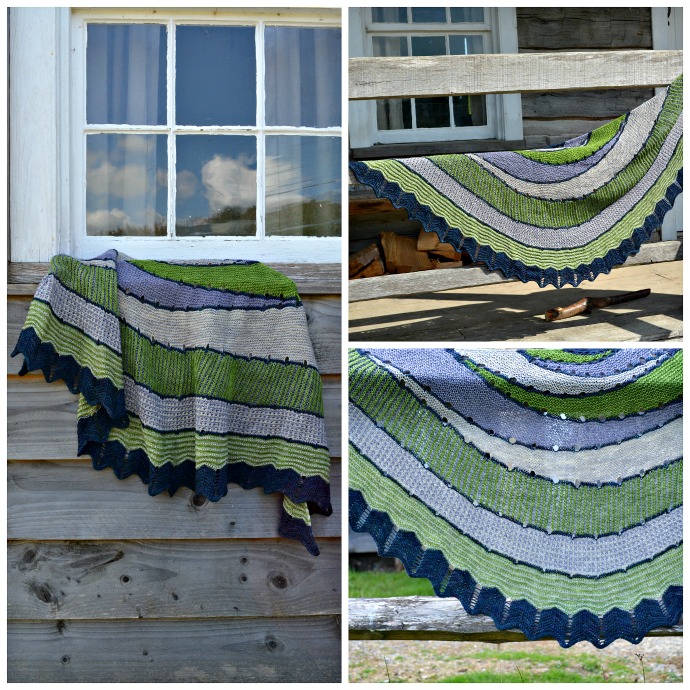
“This top down semi-circle shawl begins with my favorite Westknits shortcut rows and yarn overs followed by two-color brioche ribbing, slipped stitches, stripes, and finally a beautiful chevron border. Choose 4 colors of yarn and enjoy the playful knitting journey!” Stephen West
I loved knitting this beautiful shawl, although I had been a bit worried about the brioche section but oddly enough, the slip stitch section was the one that seemed to take the longest time to knit. I actually found that I really enjoyed knitting the brioche section.
I took this delightful shawl with me (instead of a coat) on our day trip, to the Ulster American Folk Park situated near Omagh, with Neil and our nieces.
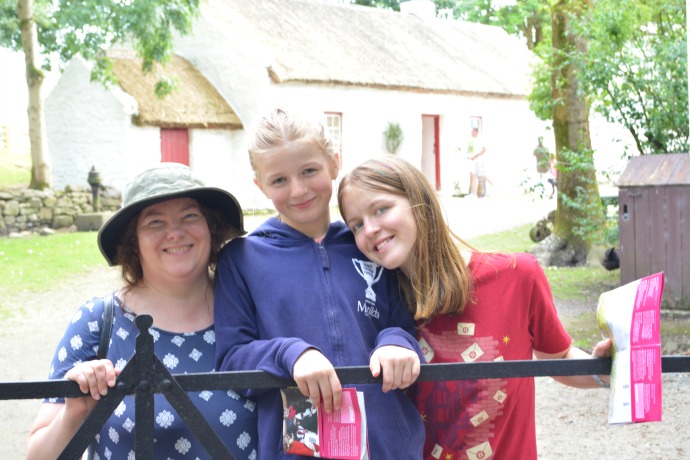
The Ulster American Folk Park is a beautiful tranquil place and we visited on a warm August day. We started with a delicious lunch in the Visitor Centre before making our way into the park.
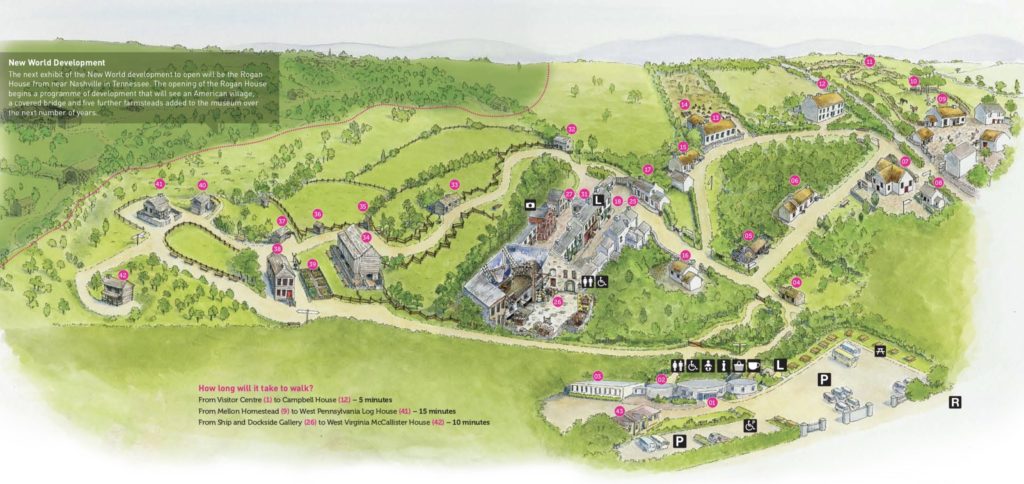
It is divided into the Old World with original buildings collected from around Ulster followed by the experience of going through the docks onto a ship destined for America. We hear about what the long 6 week journey would have been like to reach the New World. When we step off the ship we’ve arrived in the New World. My nieces ask wonderfully interesting questions in every house we visit.
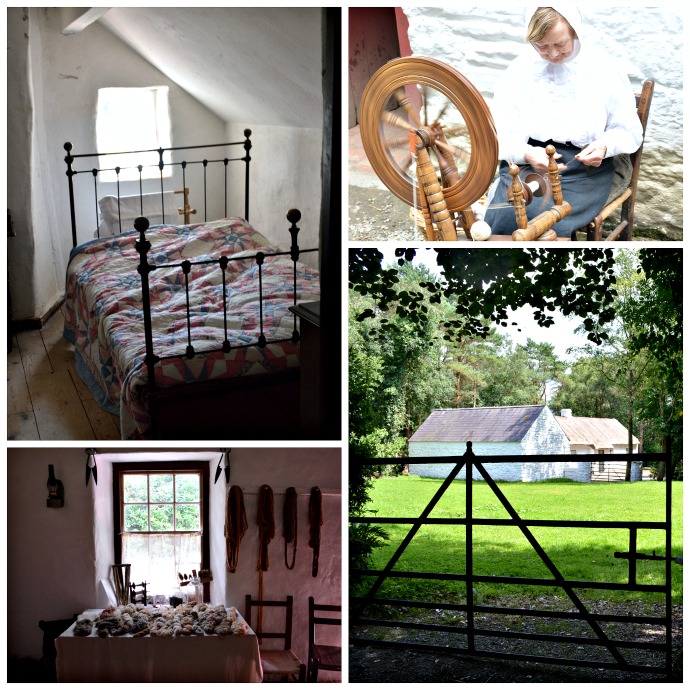
When you visit a museum like this one and you’re walking around the old cottages, you’re very much aware of how tough the lives of the people and their families were, before the advent of running water, indoor plumbing and central heating. People were hard working, inventive and multi skilled.
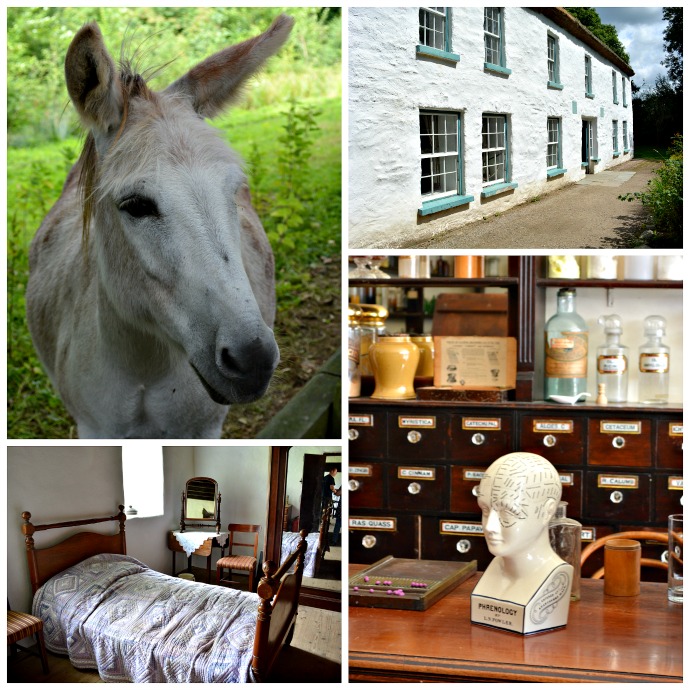
Cooking and baking at the kitchen fire, making clothes for their family: shearing the sheep, washing, carding, and spinning the fleece to create yarn for knitting or weaving. Hand washing the family clothes using soap and a wash board. Turning old clothes into warm quilts and blankets. Tending the vegetable garden…
Poverty and lack of political rights, religious freedom and thought, drove them to take the difficult decision to travel to the new world leaving their wider family circle behind in the hope of creating a better and more prosperous life for their wife and children. The sadness of knowing they would probably never seeing the family they were leaving behind again.
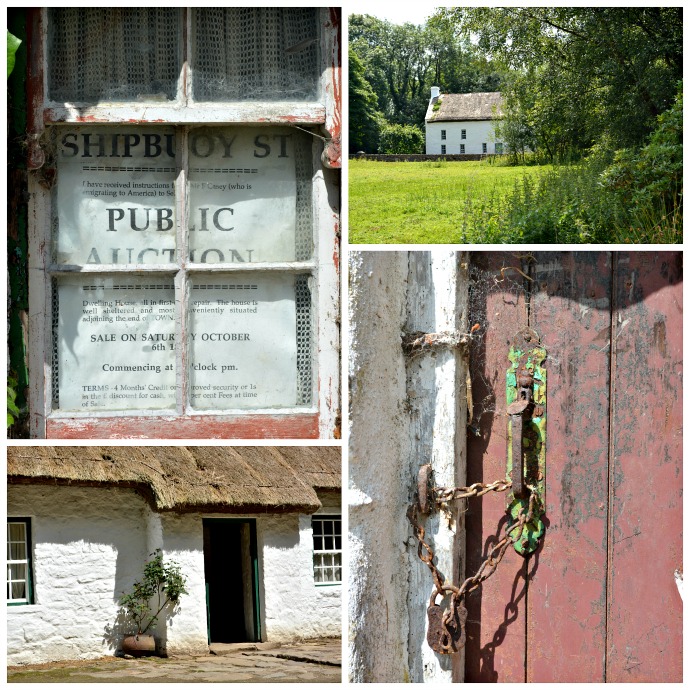
Hard physical work without all the modern comforts that we now routinely take for granted. Yet, they also had something we may have lost sight of, a slower paced life, where people knew where their food came from and the work involved in growing it. They had fewer garments in their wardrobe but knew the value of mending the clothes that they owned and the hours of effort that went into making replacements. People understood the value of what they had and were not wasteful. Scraps of fabric became patchwork quilts. Oddments of yarn became crocheted granny square blankets.
As I walk through these old homes, touching a hob nailed boot, a well worn quilt, a crocheted shawl, these things become windows into the past, and I find myself pondering on the people who wore them, who owned them and cherished them. Wondering what their wishes, plans and dreams were for themselves and their loved ones, in those moments in-between work, chores and family time.
I’m sure they were similar to my own. Although I personally count myself lucky to have been born in modern times with the benefit of all our amenities and healthcare that at times I probably take for granted. And to live in a country where I have the right to vote, freedom of thought and speech… But in these strange times, it is good to remember to appreciate all the amazing people, pets and things in my life to feel grateful for.
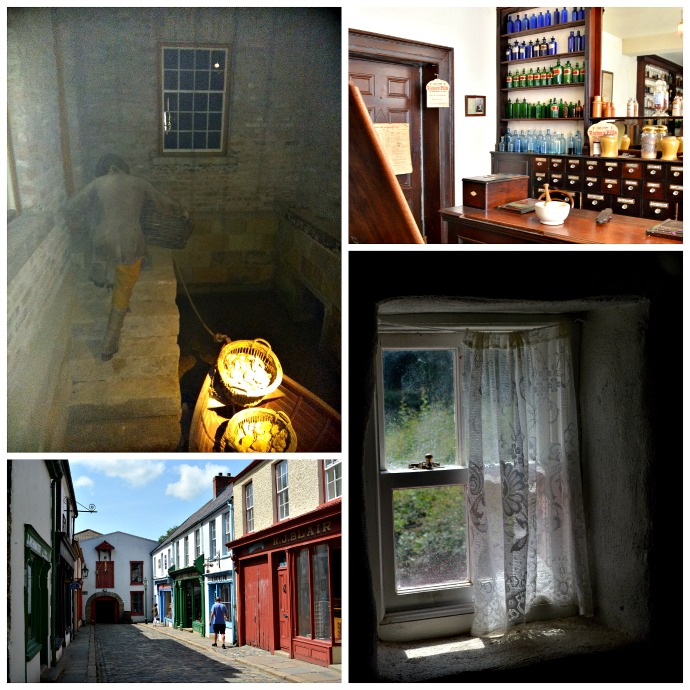
The museum has done a wonderful job of recreating the New World where the Ulster settlers would arrive with their hopes and aspirations and the tenacity to work hard to achieve them.
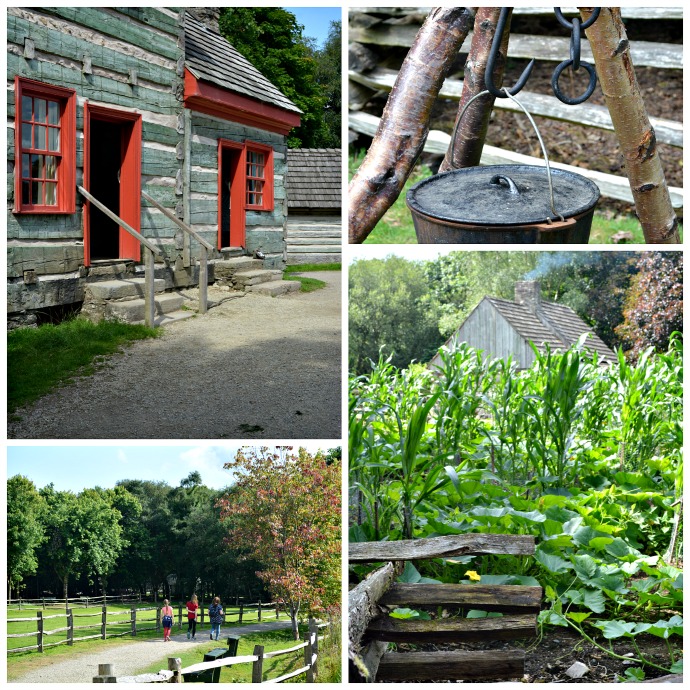
One of the loveliest buildings in the Ulster American Folk Park is the Western Pennsylvania Log House pictured below.
“This house was originally built on the Cox family farm, Greene County, Pennsylvania by Uriah Hupp in the 1800s. One of his descendants, Benjamin Franklin Hupp married Clara D. Kelley, whose family had emigrated from Armagh in 1719. The porch at the front is a common feature of American log houses from the middle of the 1800s and this three room log house is a well-preserved example of the style.”
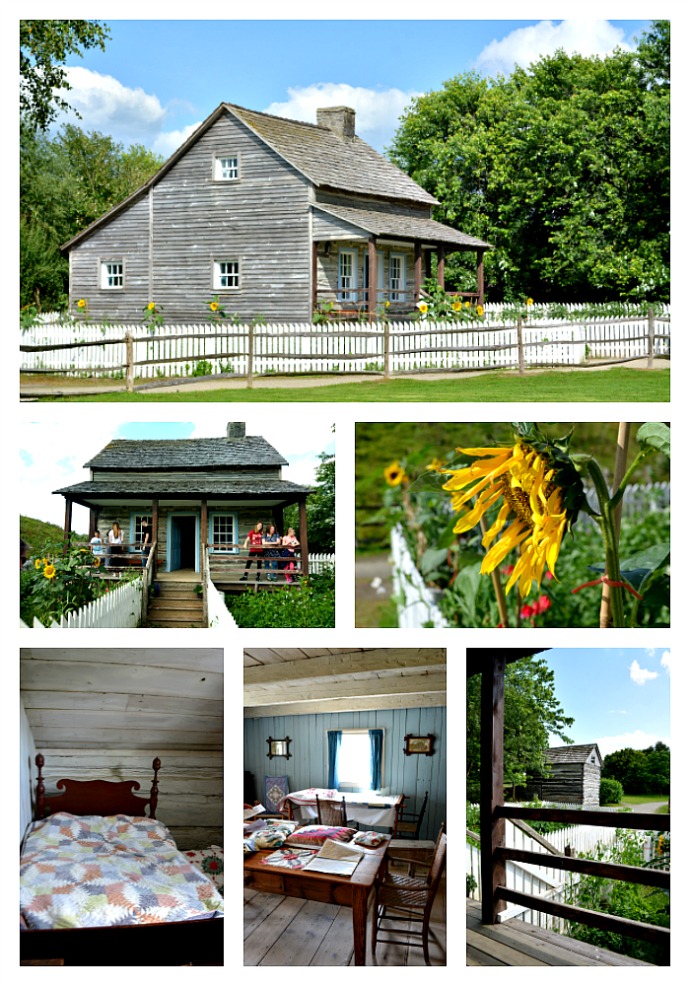
This house was so beautiful to walk around. The rooms were a modest size but comfortable and cosy. There was a lovely display of Patchwork in the main living room and lovely examples of patchwork on the beds such as the pineapple quilt above.
The Patchwork Quilt
She mixes blue and mauve and green,
Purple and orange, white and red,
And all the colours in between
To patch a cover for her bed.Oblong, triangle, star and square,
Oval, and round, she makes them fit
Into a wondrous medley there,
Colour by colour, bit by bit.Over her knee it swiftly flows,
And round her feet, a bright cascade,
While at her touch it grows and grows,
Until at last the quilt is made.And then across the bed it lies,
A thing of gorgeous crazy bloom,
As if a rainbow from the skies
Had shattered in her little room.Elizabeth Fleming
I always find that when I see these beautiful quilts that I’m so tempted to set up my sewing machine and delve into my stash of beautiful cotton fabrics ready to start again! It is so inspiring.
We all sat on the porch and looked out at the vegetable garden and sunflowers. I contemplated on the beauty of the day, our surroundings, and the joy of spending the day in the company of our lovely nieces.
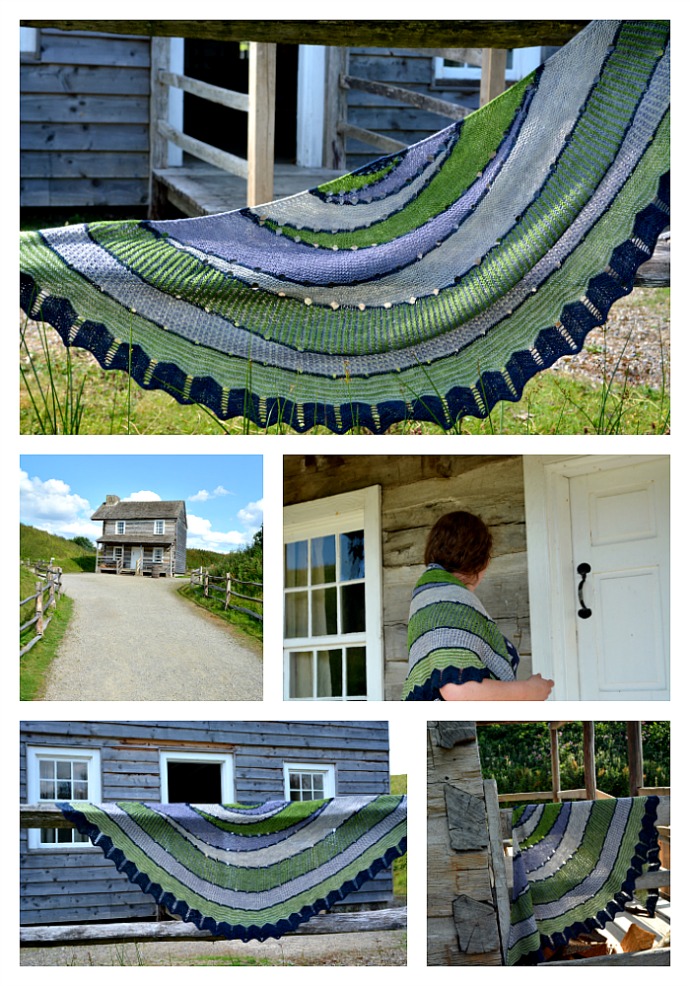
West Virginia McCallister House
“This house was built in 1827 by Richard McCallister in the hills along Tyler Creek near the town of Salt Rock, Cabell County, West Virginia. Richard was born in Bath County, Virginia. His grandfather James is believed to have emigrated from Ulster in the 1720s. Richard married his first wife Sarah in 1814 and they built this house for their growing family to live in. Richard was a farmer and according to the 1860 US Census, he could read and write, owned land and property to the value of $1000 as well as personal belongings to the value of $200. The house and land was purchased by the county in the 1850s and turned into Cabell County Poor Farm.”
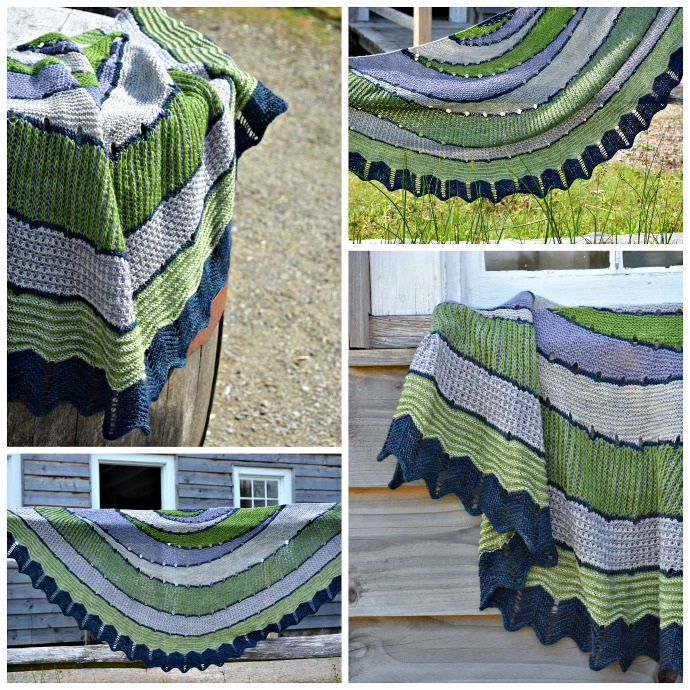
We were nearly at the final house in the New World part of the folk park when we arrived at the West Virginia McCallister House. The colour of the silvered weathered timber just seemed to be the perfect backdrop for photographing my Exploration Station Shawl. It enhanced the beautiful colours in the knitting and brought them to life.
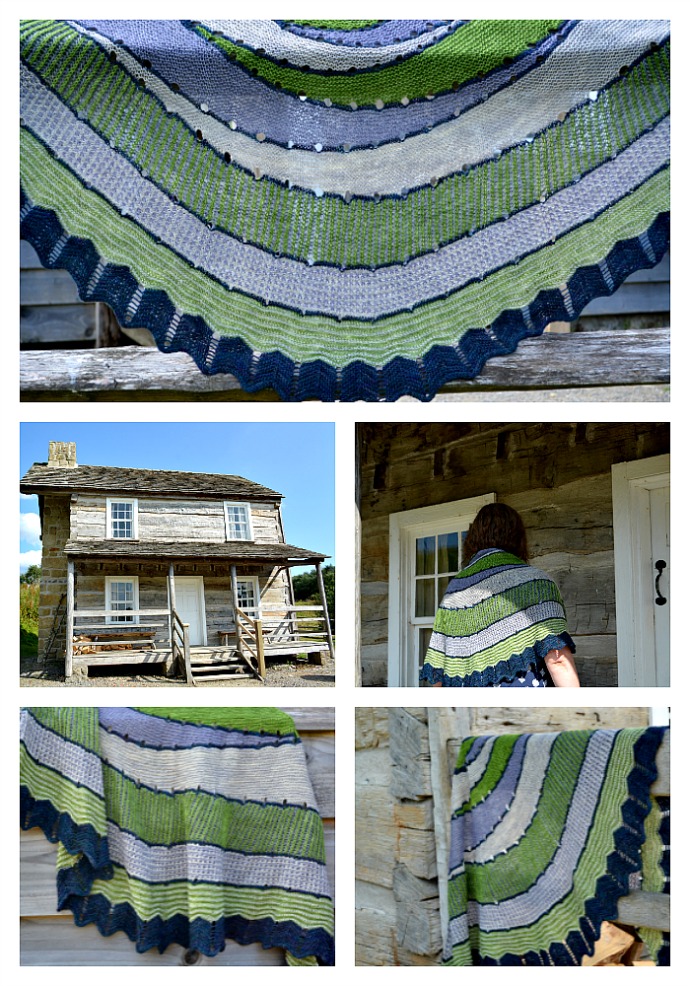
The Ulster American Folk Park is a perfect place for a family day out.
Map of the Ulster American Folk Park.
Ulster American Folk Park Website.

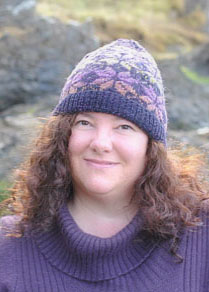
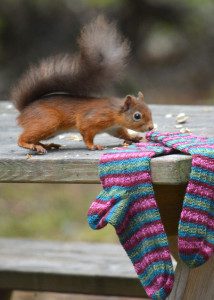
What a lovely museum and I can attest to the authenticity, living in Pennsylvania.
It is a wonderful place! Thank you.